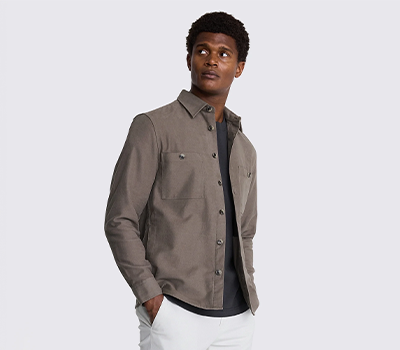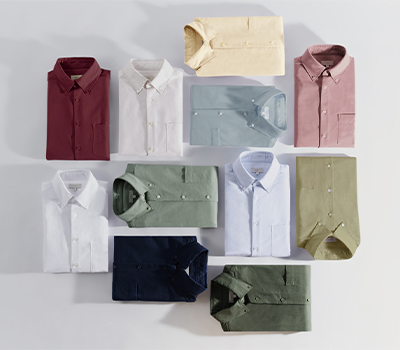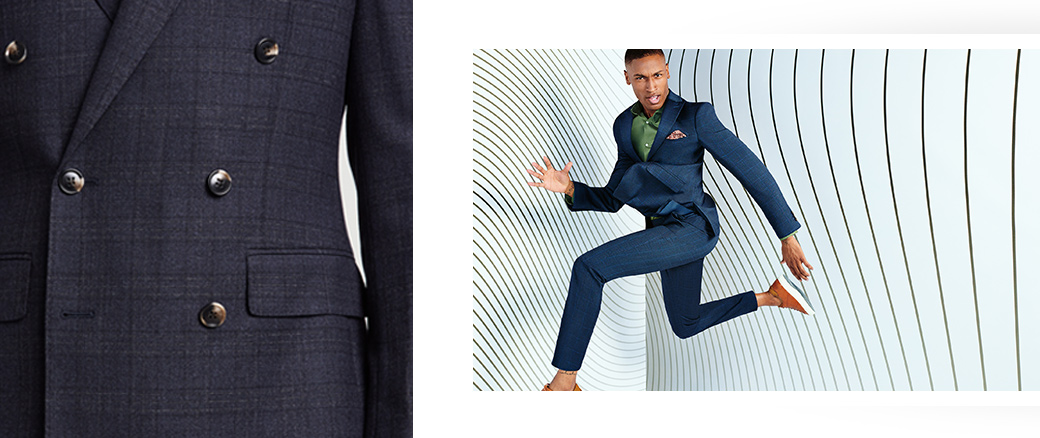
Stretch fabric comes in many forms – here’s what to look for.
When you think of materials with stretch, it’s hard not to picture a pair of Lycra cycling shorts. But it’s actually useful in tailoring, too.
Whether you want to show off your hard work in the gym with a shirt that hugs your muscles or you’re looking for something comfortable that moves with you, what you need is a material with some stretch.
There are three main ways fabrics get their flexibility: it can be natural, added to the material or created by how it’s woven. It may seem picky, but understanding how each one works will help you choose suits and shirts with the look and feel you’re after.
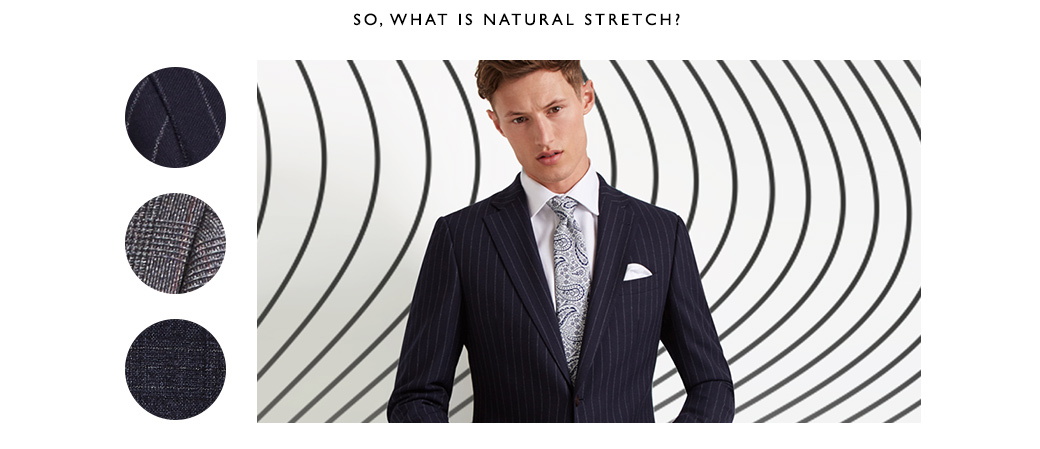
Some fibres naturally have more give than others, which comes down to scientific things like molecules and structures. Don’t worry, we won’t go all Brian Cox on you. All you need to know is that pure wool often has a slight stretch. Anyone who has put a 100% merino wool jumper in a 40’C wash will have seen this when it came out nearly half the size – it shrinks because the wool can both stretch and decrease in size.
A pure wool suit won’t stretch as such, but it will naturally move with you more than more synthetic fabrics like polyester will. Plus, wool is breathable and can hold a bit of water without becoming damp, so it will look smart and feel comfortable when the pressure is on.
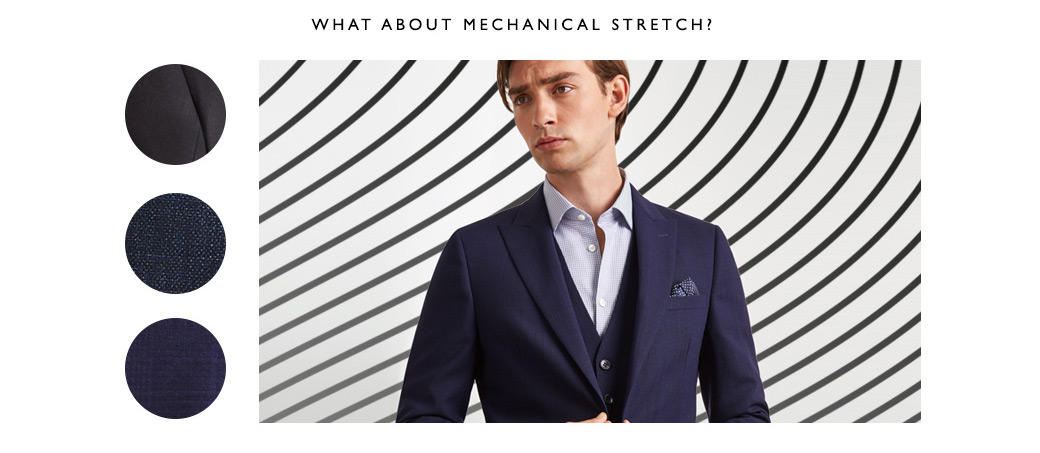
Pure wool can also be woven in a technical way to create stretch cloth – this involves highly spinning yarns to enhance their flexibility. Suits made this way are often still labelled as having ‘natural’ stretch because no synthetic material has been added. Essentially, it’s a clever way of getting a slight stretch without adding in more fibres, so the cloth’s handle (how it feels) stays the same.
Mechanical weaves are designed to spring back into shape, which means they shouldn’t crease. Polo shirts, jumpers and t-shirts that are 100% cotton will usually have mechanical stretch – that’s how you can easily get them over your head but still get a good fit once they’re on – and you’ll now find lots of tailoring does too.
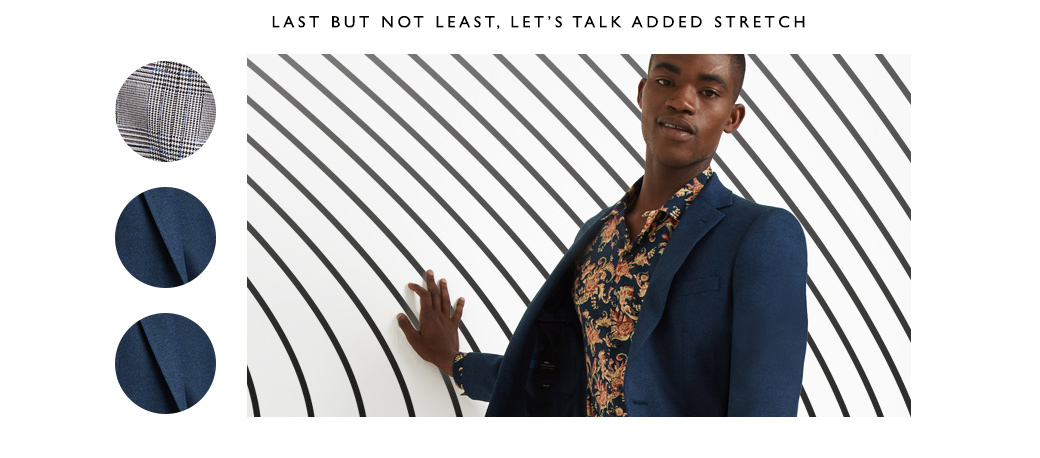
Elastane is a ridiculously stretchy synthetic material made by chemicals. It’s also often called Spandex or Lycra. Full-on Lycra might cling to every contour on your body (think cycling gear), but combining it with other materials, like cotton, wool and polyester, will add just the right amount of give. You only need a small amount to get a close-fitting finish – even as little as 2% – which is why we add it to lots of our skinny fit suits and shirts.
WHICH ONE TO GO FOR?
That depends on the look you want and the occasion. If you’re aiming for something smart but comfortable, the natural give of a 100% wool suit won’t let you down. Need a little more room to move and extra resistance to creasing? Look out for fabrics that are knitted to offer flexible structure. And if you’re after a sharp look that offers maximum mobility, go for suits and shirts with elastane woven in.

